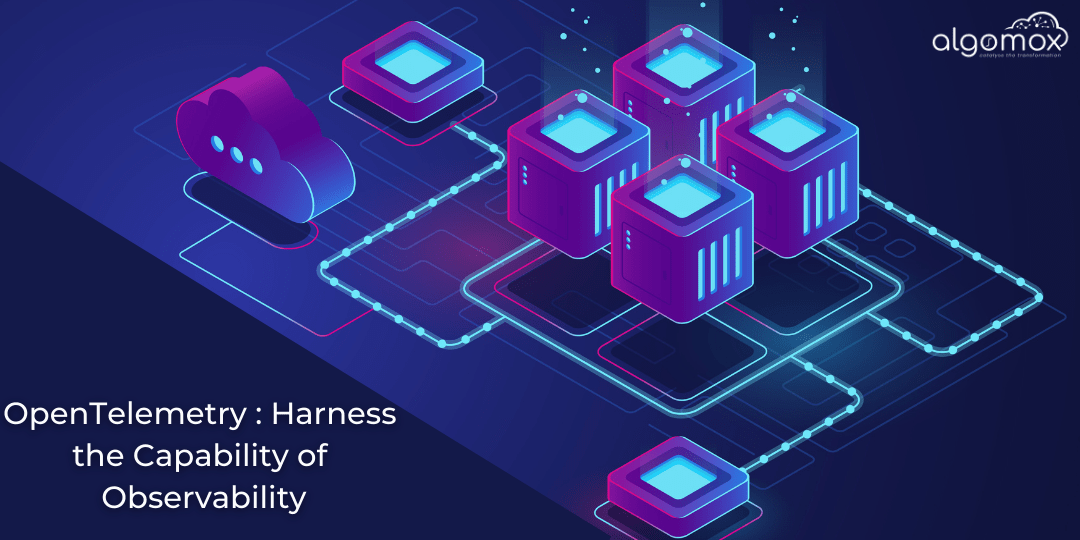OpenTelemetry Harness the Capability of Observability.
Mar 9, 2021. By Aleena Mathew

The era of digital transformation shook up the entire IT organization. To keep up with business demands and competition, the adoption of this digital transformation became a must. With this transformation, the complete IT infrastructure became more complex. The implementation of containerization came into the picture. Also, systems were more dependant on 3rd party applications. Many IT resources have moved out of the data center and completely shifted to the public cloud. All of these new changes just started to add up the complexity of the entire organization. Due to this complexity, there was a need for tools capable of monitoring and analyzing the whole system effectively. Furthermore, it was difficult to track stability and performance issues by the usage of conventional data - logs, metrics, and traces. So, for this to happen, the use of traditional monitoring tools was not sufficient. That's where Observability took its place.
Observability:
As the organization evolving into the digital era, the use of data just started to multi-fold. There was a large volume of structured and unstructured that needs to be collected and monitored. Current IT monitoring tools won't alone solve the need for identifying unknown problems from these data. Observability is a derivative of control theory. Observability helped in uncovering hidden issues from a large volume of data. Observability easily detected outliers in the system. By applying AI into Observability, things became a little more advanced. AI-based Observability helped in identifying anomalies from data and intelligently altered the IT operator. Even with the Observability in place, it became difficult to complete tracing today because each action needs to go through many layers of application and resources. When paired with uncertain log data, the process of tracking down a single incident can take hours because the information isn't always consistently siloed. That's where the concept of OpenTelemetry took its place.
OpenTelemetry:
OpenTelemetry is an observability framework for cloud-native software. OpenTelemetry is currently a Cloud Native Computing Foundation (CNCF) sandbox project that provides a unified set of vendor-agnostic libraries/APIs for collecting and sending data to compatible backends. It contains a specific set of SDKs, APIs, and integration designed for the management of telemetry data such as KPIs, logs, and trace.OpenTelemetry can be used to generate, collect and export telemetry data for observance and analysis. It eventually helps in understanding software performance and behavior.
The Evolution of OpenTelemerty:
OpenTelemetry is formed through the merging of OpenCensus and OpenTracing projects. OpenCensus is a set of libraries for various languages that allow you to collect application metrics and distributed traces, then transfer the data. OpenTracing comprises API specifications, frameworks, and libraries. It helps developers to add specifications into their application code using API. Both of these projects, at some certain point, started creating chaos in the system as they failed in providing end-to-end visibility, that's where they were merged to one single project termed OpenTelmetry.
OpenTelemerty to harness Observability:
OpenTelemerty takes hold of three significant aspects of Observability: metrics, logs, and traces. OpenTelemetry makes it easy to identify any failures and performance issues by observing the traces, metrics, and logs. Opentelemetry helps to harness Observability to a great extent by providing greater visibility throughout the network. Moreover, with the telemetry capabilities in hand, tracking performance and metrics became easy. Apart from that, the real-time tracking of issues was made possible, and this eventually helped capture unknown issues such as anomalies from the system in a proactive fashion. That is, intelligently predicting issues and effectively altering the IT operator.
Benefits of OpenTelemrty in Observability:
1. OpenTelemetry consolidates system metrics, tracing, and logging together. The concept of OpenTelemerty helps in consolidating system metrics, tracing, and logging together. This helps in improving the Observability to a great extend. This helps provide more deep insights into any application or IT resources that help improve the overall Observability.
2. Greater levels of Observability improve an organization's reliability and improves system availability. The use of OpenTelemerty helped in unlocking the greater capabilities of Observability. This helped proactively predict if there were any issues in the system and automatically alerted the IT team. In this way, the business was less impacted by any issues and any issues detected in the system were automatically resolved using auto-remediation and auto-fulfillment.
3. With better visibility, organizations can track down and resolve incidents much faster. The AI-based mechanism is effective enough to automatically identify anomalies from the system and create an incident ticket. Based on the ticket, and the auto-remediation process will work in-order to resolve the issue. In this way, organizations can track down and resolve incidents much faster.
OpenTelemetry has great promise, and along with Observability, it becomes a powerful combination for any IT organization. OpenTelemetry will truly make observability much easier.
To learn more about Algomox AIOps, please visit our AIOps Platform Page.